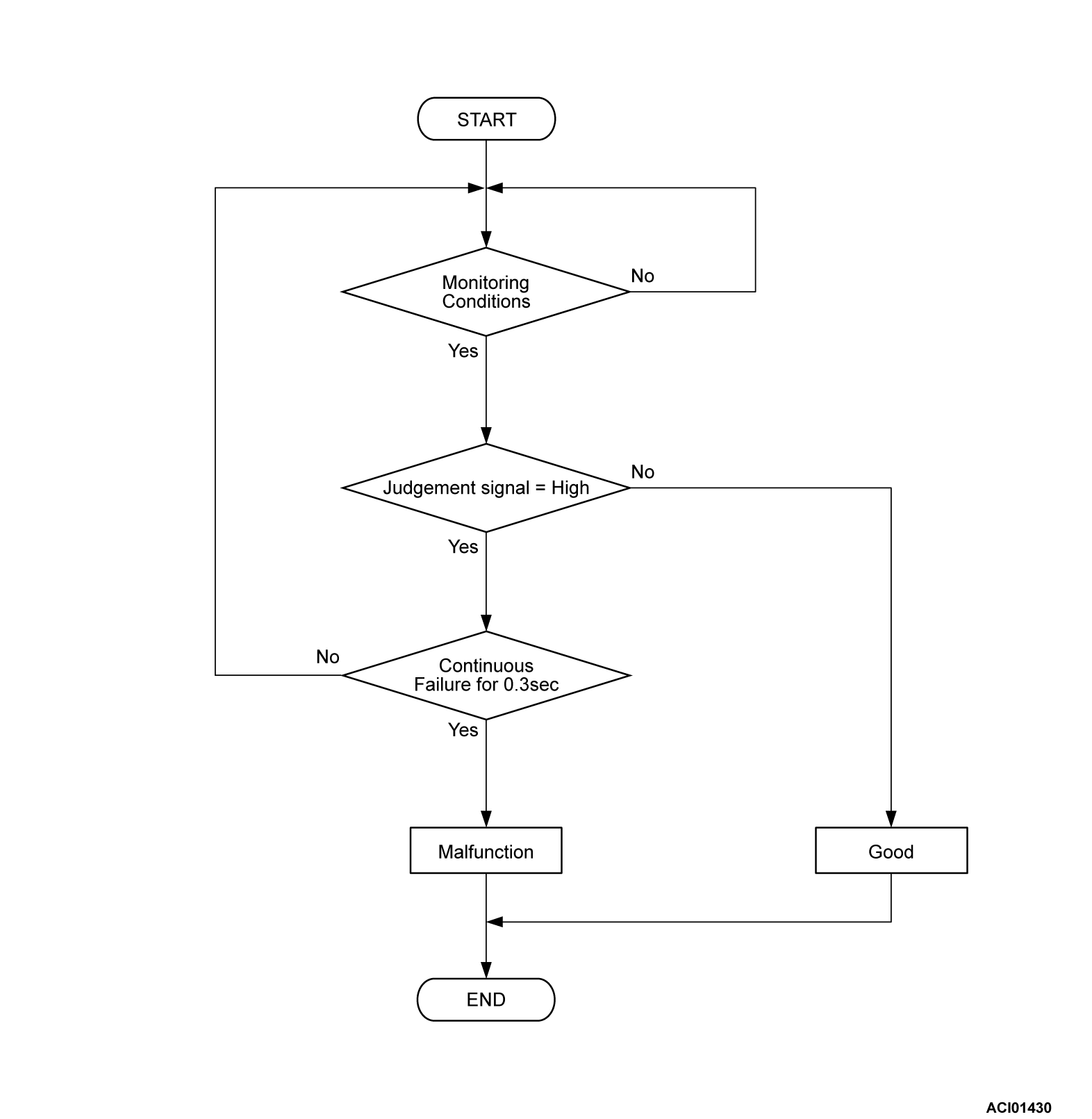DTC P0AE0: Negative Contactor Control Circuit High
| danger |
| caution | Before replacing the ECU, ensure that the communication circuit is normal. |
DESCRIPTIONS OF MONITOR METHODS
- Main contactor (N) excitation circuit status is judged by voltage and current of an intelligent power device (IPD) in the PHEV-ECU.
- Each fail is judged under the following conditions.
- Main contactor (N) control circuit open/shorted high: Main contactor (N) control circuit active command is off.
MONITOR EXECUTION
- Continuous
MONITOR EXECUTION CONDITIONS (Other monitor and Sensor)
Other Monitor (There is no temporary DTC stored in memory for the item monitored below)
- EV-CAN monitor
Sensor (The sensor below is determined to be normal)
- Not applicable
DTC SET CONDITIONS
Check Conditions
- The PHEV-ECU power supply voltage is more than 9.0 volts.
- The main contactor (N) activation command off.
Judgment Criterion
- Judgment signal from intelligent power device (IPD) for main contactor (N) is high for immediately.
PROBABLE CAUSES
- Damaged harness or connector.
- Malfunction of the main contactor (N).
- Malfunction of the PHEV-ECU.
DIAGNOSIS
Required Special Tools
- MB991223: Wiring harness set
- MB992006: Extra fine probe
STEP 1. Resistance measurement at the main drive lithium-ion battery connector.
(1) Disconnect the D-33 main drive lithium-ion battery connector, and measure at the wiring harness side.
(2) Measure the resistance between D-33 main drive lithium-ion battery connector terminal No.4 and body ground
OK: Continuity exists (2 Ω or less)
Is the check result normal?
STEP 2. Check the signal line for open circuit (PHEV-ECU connector and main drive lithium-ion battery connector).
(1) Disconnect the C-41 PHEV-ECU connector, D-32 main drive lithium-ion battery connector, and measure at the harness connector side.
(2) Measure the resistance between PHEV-ECU connector (terminal CNT-) and the D-32 main drive lithium-ion battery connector terminal No.2.
OK: Continuity exists (2 Ω or less)
Is the check result normal?
STEP 3. Check the main drive lithium-ion battery main contactor (N) <On-vehicle check>.
Check resistance of main contactor (N) coil with harness connector (Refer to  ).
).
 ).
).Is the check result normal?
STEP 4. Check the main drive lithium-ion battery main contactor (N).
Is the check result normal?
STEP 5. Voltage measurement at PHEV-ECU connector (CNT- terminal).
(1) Connect the PHEV-ECU connector and the main drive lithium-ion battery connectors.
(2) Measure the PHEV-ECU connector side by backprobing.
(3) Turn on the power supply mode of the electric motor switch.
(4) Measure the voltage between the PHEV-ECU connector (terminal CNT-) and body ground.
OK: 1 V or less
Is the check result normal?
STEP 6. Check the CNT- wire at the main drive lithium-ion battery connector for short to power supply.
(1) Disconnect the D-32 main drive lithium-ion battery connector and measure at the main drive lithium-ion battery side.
(2) Measure the resistance between D-32 main drive lithium-ion battery connector terminal No.2 and No.5.
OK: No continuity
(3) Measure the resistance between D-32 main drive lithium-ion battery connector terminal No.2 and No.3.
OK: No continuity
(4) Turn on the power supply mode of the electric motor switch.
(5) Measure the voltage between the main drive lithium-ion battery connector terminal No.2 and body ground.
OK: 1 V or less
Is the check result normal?
STEP 7. Check the signal line for short circuit to power supply (PHEV-ECU connector and main drive lithium-ion battery connector).
(1) Disconnect the C-41 PHEV-ECU connector and measure at the harness connector side.
(2) Measure the resistance between C-41 PHEV-ECU connector terminal CNT- and the other than terminal CNT-.
OK: No continuity
(3) Turn on the power supply mode of the electric motor switch.
(4) Measure the voltage between the PHEV-ECU connector (terminal CNT-) and body ground.
OK: 1 V or less
Is the check result normal?
![[Previous]](../../../buttons/fprev.png)
![[Next]](../../../buttons/fnext.png)


